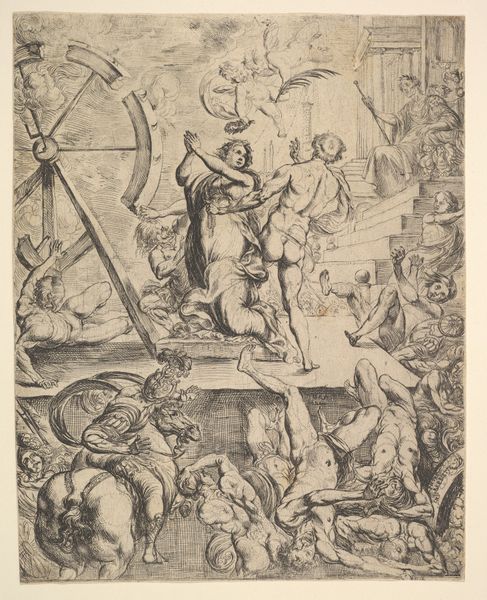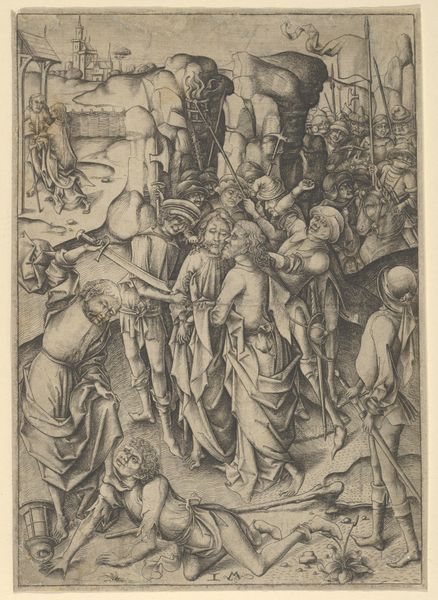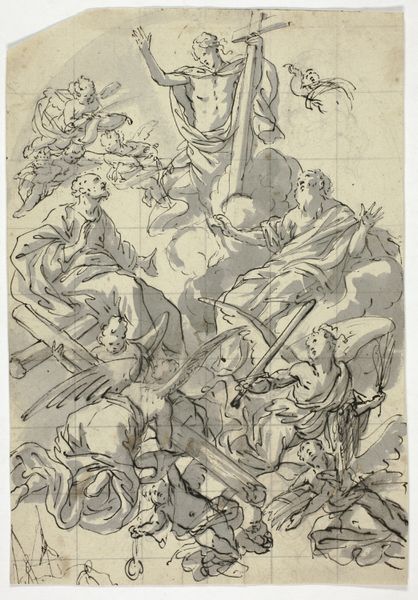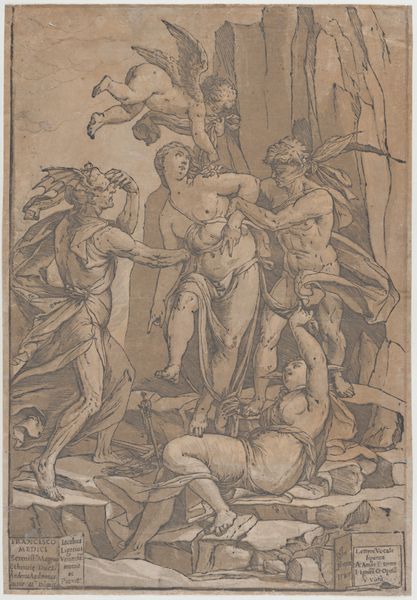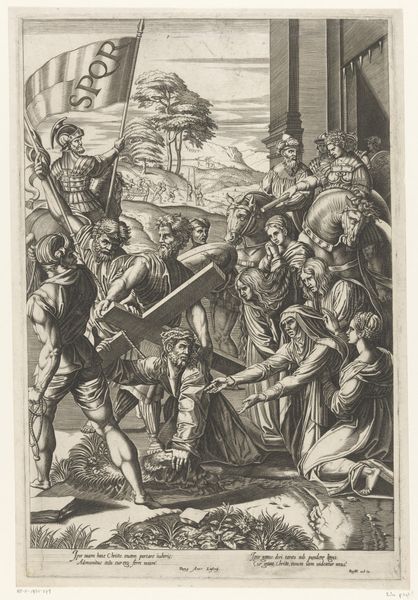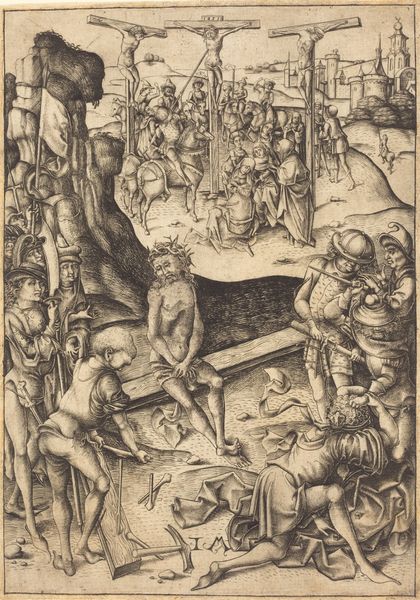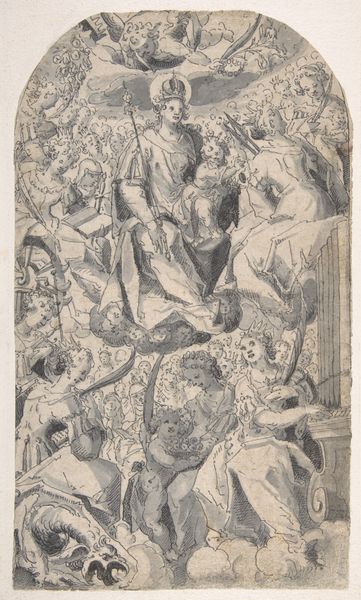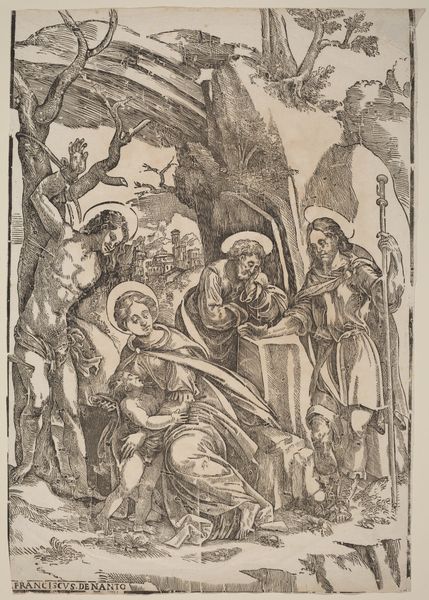
engraving
#
figuration
#
history-painting
#
italian-renaissance
#
engraving
Dimensions: height 606 mm, width 469 mm
Copyright: Rijks Museum: Open Domain
Andrea Andreani created this chiaroscuro woodcut, “Moses Breaking the Tablets of the Law,” around 1600 in Italy. The print depicts Moses’s rage upon descending Mount Sinai to find the Israelites worshipping a golden calf. Andreani’s image participates in a long history of representing Biblical scenes in ways that reflect contemporary social values. Here, the artist emphasizes the dramatic moment of Moses’s violent act. This theatrical presentation aligns with the broader Mannerist style, popular at the time, known for its exaggerated forms. But it is also invested in the politics of imagery at a time of religious conflict. Prints like this one were widely disseminated and affordable. They reinforced religious teachings while simultaneously showcasing the artistic skill of the printmaker and, by extension, the cultural sophistication of the society that produced it. Understanding this artwork fully requires examining not only its visual elements but also its place within the religious, economic, and artistic institutions of its time. Studying period documents, religious texts, and the history of printmaking helps us understand the complex layers of meaning embedded in this powerful image.
Comments
No comments
Be the first to comment and join the conversation on the ultimate creative platform.

